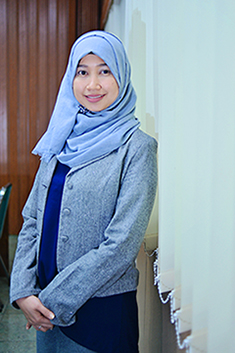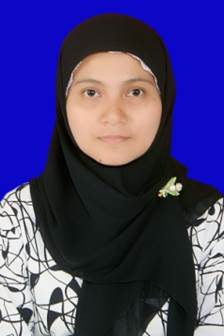Optimization and Prevalidation of TLC-Densitometry Method for Fucoidan Analysis in Sargassum sp. Aqueous Extract
Downloads
Background: Fucoidan is sulfated polysaccharide that has gastroprotector activity, and it is distributed in brown algae cell walls. Currently, there is no method for fucoidan analysis in compendia. Furthermore, analysis of Fucoidan is proven to be challenging due to the lack of chromophores and its high polarity. Objective: To develop the optimal condition of TLC-Densitometry method for fucoidan analysis in Sargassum sp. aqueous extract and to evaluate the stability of Fucoidan as a preliminary study. Methods: Chromatography was performed on Silica gel 60F254 TLC-plate as a stationary phase. The developed plate was stained with H2SO4 10% in absolute ethanol and heated in oven at 105°C for 15 minutes. Optimization is carried out by determining composition of the mobile phase, analytical wavelength, and spotting volume. Stability test of Fucoidan in standard and extract solution at 0, 4, 8, and 24 hours also 0 and 60 minutes after derivatization. Results: The optimal condition which produces a good separation of Fucoidan was achieved by using n-butanol:methanol: water (10:6:10 v/v/v) as a mobile phase, 400 nm as an analytical wavelength, and 1 µl as a spotting volume. Fucoidan was stable after storage until 24 hours. The stained spots were stable until 60 minutes after derivatization. Conclusion: Optimal condition of the TLC-Densitometry method for Fucoidan analysis was selective and can be applied to stability tests in preliminary study. Fucoidan was stable in standard solution and extracted solution until 24 hours after storage at 4°C, and the stained spots were stable until 60 minutes after derivatization.
Ahmad, A., Amir, M., Alshadidi, A. A., Delwar, M., Haq, A., & Kazi, M. (2020). Central composite design expert-supported development and validation of HPTLC method : Relevance in quantitative evaluation of protopine in Fumaria indica. Saudi Pharmaceutical Journal, 28(4), 487–494. https://doi.org/10.1016/j.jsps.2020.02.011
AOAC International. (2019). Guideline for Dietary Supplements and Botanical (Appendix K). AOAC Official Method Analysis, 6. https://pdf4pro.com/amp/view/appendix-k-guidelines-for-dietary-supplements-and-740985.html
Artemisia, R., Nugroho, A. K., Setyowati, E. P., & Martien, R. (2019). The Properties of Brown Marine Algae Sargassum turbinarioides and Sargassum ilicifolium Collected From Yogyakarta, Indonesia. Indonesian Journal of Pharmacy, 30(1), 43. https://doi.org/10.14499/indonesianjpharm30iss1pp43
Chaudhari, S. R., & Shirkhedkar, A. A. (2020). Application of Plackett-Burman and central composite designs for screening and optimization of factor influencing the chromatographic conditions of HPTLC method for quantification of efonidipine hydrochloride. Journal of Analytical Science and Technology, 11(1). https://doi.org/10.1186/s40543-020-00246-2
Czyrski, A., & Sznura, J. (2019). The application of Box-Behnken-Design in the optimization of HPLC separation of fluoroquinolones. Scientific Reports, 9(1), 1–10. https://doi.org/10.1038/s41598-019-55761-z
Ekasari, W., Widiyastuti, Y., Subositi, D., Hamsidi, R., Widyawaruyanti, A., Basuki, S., & Setyawan, D. (2020). Determination of Cassiarin A Level of Cassia siamea Leaf Obtained from Various Regions in Indonesia Using the TLC-Densitometry Method. Scientific World Journal, 2020. https://doi.org/10.1155/2020/7367836
Hu, Y., Ren, D., Song, Y., Wu, L., He, Y., Peng, Y., Zhou, H., Liu, S., Cong, H., Zhang, Z., & Wang, Q. (2020). Gastric protective activities of fucoidan from brown alga Kjellmaniella crassifolia through the NF-κB signaling pathway. International Journal of Biological Macromolecules, 149, 893–900. https://doi.org/10.1016/j.ijbiomac.2020.01.186
Indrayanto, G., Yuwono, M., & Suciati. (2009). TLC: Validation of Analyses. In Encyclopedia of Chromatography (pp. 2336–2339). https://doi.org/10.1201/NOE0824727857.ch383
Isnansetyo, A., Lutfia, F. N. L., Nursid, M., Trijoko, T., & Susidarti, R. A. (2017). Cytotoxicity of fucoidan from three tropical brown algae against breast and colon cancer cell lines. Pharmacognosy Journal, 9(1), 14–20. https://doi.org/10.5530/pj.2017.1.3
Li, G. Y., Luo, Z. C., Yuan, F., & Yu, X. bin. (2017). Combined process of high-pressure homogenization and hydrothermal extraction for the extraction of fucoidan with good antioxidant properties from Nemacystus decipients. Food and Bioproducts Processing, 106, 35–42. https://doi.org/10.1016/j.fbp.2017.08.002
Rohim, A., -, Y., & Estiasih, T. (2019). Senyawa-Senyawa Bioaktif Pada Rumput Laut Cokelat Sargassum Sp. : Ulasan Ilmiah. Jurnal Teknologi Pertanian, 20(2), 115–126. https://doi.org/10.21776/ub.jtp.2019.020.02.5
Satpathy, S., Patra, A., Hussain, M. D., & Ahirwar, B. (2017). Simultaneous Estimation of Genistein and Daidzein in Pueraria Tuberosa ( Willd .) DC by Validated High Performance Thin Layer Chromatography ( HPTLC ) Densitometry Method. 6076(June). https://doi.org/10.1080/10826076.2017.1329743
Sherma, J., & Rabel, F. (2018). A review of thin layer chromatography methods for determination of authenticity of foods and dietary supplements. Journal of Liquid Chromatography and Related Technologies, 41(10), 645–657. https://doi.org/10.1080/10826076.2018.1505637
Venkatesan, J., Singh, S. K., Anil, S., Kim, S. K., & Shim, M. S. (2018). Preparation, characterization and biological applications of biosynthesized silver nanoparticles with chitosan-fucoidan coating. Molecules, 23(6), 3. https://doi.org/10.3390/molecules23061429
Wall, P. E. (2005). RSC Chromatography Monographs: Thin-layer Chromatography. In The Royal Society of Chemistry. https://www.google.com/url?sa=i&rct=j&q=&esrc=s&source=web&cd=&cad=rja&uact=8&ved=0CAIQw7AJahcKEwigpdbn2N7_AhUAAAAAHQAAAAAQAw&url=https%3A%2F%2Fwww.researchgate.net%2Fprofile%2FGunawan_Indrayanto%2Fpost%2FNeed_advice_on_Thin_Layer_Chromatography%2Fattachment%2F59d623c179197b80779820dd%2FAS%3A308994403438592%401450681415025%2Fdownload%2FThin-layer..Chromatography_Handbook_2005.pdf&psig=AOvVaw19Rb2Xxy5XLtyfYmezhS5N&ust=1687791866899098&opi=89978449
Yamazaki, Y., Nakamura, Y., & Nakamura, T. (2016). A fluorometric assay for quantification of fucoidan, A sulfated polysaccharide from brown algae. Plant Biotechnology, 33(2), 117–121. https://doi.org/10.5511/plantbiotechnology.16.0217c
Yuwono, M., & Indrayanto, G. (2005). Validation of Chromatographic Methods of Analysis. Profiles of Drug Substances, Excipients and Related Methodology, 32(05), 241–260. https://doi.org/10.1016/S0099-5428(05)32009-0
Zayed, A., El-Aasr, M., Ibrahim, A. R. S., & Ulber, R. (2020). Fucoidan characterization: Determination of purity and physicochemical and chemical properties. Marine Drugs, 18(11), 1–31. https://doi.org/10.3390/md18110571
Zhao, M., Garcia-Vaquero, M., Przyborska, J., Sivagnanam, S. P., & Tiwari, B. (2021). The development of analytical methods for the purity determination of fucoidan extracted from brown seaweed species. International Journal of Biological Macromolecules, 173, 90–98. https://doi.org/10.1016/j.ijbiomac.2021.01.083
Zhu, Z., Zhu, B., Ai, C., Lu, J., Wu, S., Liu, Y., Wang, L., Yang, J., Song, S., & Liu, X. (2018). Development and application of a HPLC-MS/MS method for quantitation of fucosylated chondroitin sulfate and fucoidan in sea cucumbers. Carbohydrate Research, 466(1), 11–17. https://doi.org/10.1016/j.carres.2018.07.001
Copyright (c) 2023 JURNAL FARMASI DAN ILMU KEFARMASIAN INDONESIA

This work is licensed under a Creative Commons Attribution-NonCommercial-ShareAlike 4.0 International License.
1. The copyright of this journal belongs to the Editorial Board and Journal Manager with the author's knowledge, while the moral right of the publication belong to the author.
2. The formal legal aspect of journal publication accessibility refers to the Creative Commons Attribution-Non-Commercial-Share Alike (CC BY-NC-SA), which implies that the publication can be used for non-commercial purposes in its original form.
3. Every publication (print/electronic) is open access for educational, research, and library purposes. In addition to the objectives mentioned above, the editorial board is not responsible for copyright infringement


.jpg)















